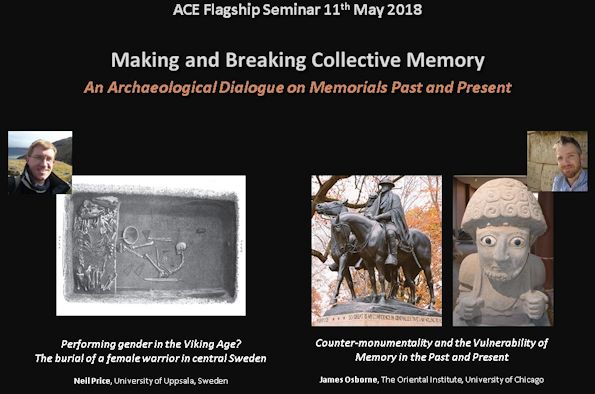
Making and Breaking Collective Memory
- Violaine Chauvet
- Admission: Admission is free. Please register via Eventbrite.
Add this event to my calendar
Click on "Create a calendar file" and your browser will download a .ics file for this event.
Microsoft Outlook: Download the file, double-click it to open it in Outlook, then click on "Save & Close" to save it to your calendar. If that doesn't work go into Outlook, click on the File tab, then on Open & Export, then Open Calendar. Select your .ics file then click on "Save & Close".
Google Calendar: download the file, then go into your calendar. On the left where it says "Other calendars" click on the arrow icon and then click on Import calendar. Click on Browse and select the .ics file, then click on Import.
Apple Calendar: The file may open automatically with an option to save it to your calendar. If not, download the file, then you can either drag it to Calendar or import the file by going to File >Import > Import and choosing the .ics file.
Making and Breaking Collective Memory - An archaeological dialogue on memorials past and present
Counter-monumentality and the Vulnerability of Memory in the Past and Present
James Osborne
The Oriental Institute, University of Chicago
Abstract
The creation of monuments provides a venue for both materializing and challenging collective memories. Despite their appearance of strength and permanence, monuments render the memory of their creators vulnerable and open to contestation through alteration, defacement or removal. Examples from the present and the past demonstrate these points: a statue of Confederate generals Robert E. Lee and Thomas ‘‘Stonewall’’ Jackson in Baltimore, Maryland, and a corpus of monumental statues from southeastern Anatolia and northern Syria during the Iron Age.
Performing gender in the Viking Age?
The burial of a female warrior in central Sweden
Neil Price
University of Uppsala, Sweden
Abstract
The warrior woman or 'shield maiden' has long been part of the Viking image. However, until recently the actual Viking-Age evidence for female fighters, real or mythical, has been sparse. This lecture presents the results of a recent research project in central Sweden, showing that the body in an 'archetypal' high-status warrior grave - always assumed to be male since its excavation in 1878 - was in fact biologically female. The publication of these findings received widespread media attention and also attracted controversy, which will be addressed in detail here together with the implications of the burial as a gendered performance.
